
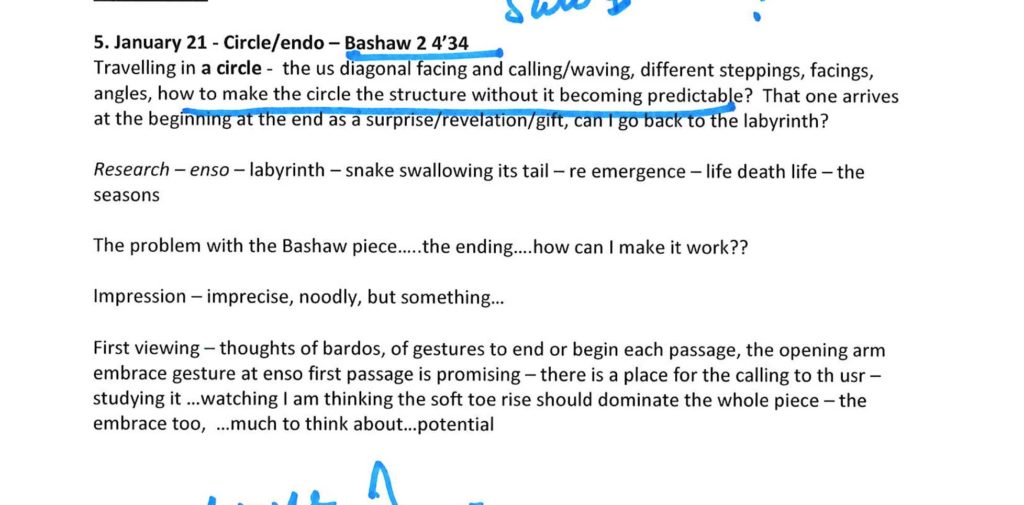
January 21/5
5. Circle/endo – Bashaw 2 4’34
Travelling in a circle – the us diagonal facing and calling/waving, different steppings, facings, angles, how to make the circle the structure without it becoming predictable? That one arrives at the beginning at the end as a surprise/revelation/gift, can I go back to the labyrinth?
Research – enso – labyrinth – snake swallowing its tail – re emergence – life death life – the seasons
The problem with the Bashaw piece…..the ending….how can I make it work??
Impression – imprecise, noodly, but something…
First viewing – thoughts of bardos, of gestures to end or begin each passage, the opening arm embrace gesture at enso first passage is promising – there is a place for the calling to th usr – studying it …watching I am thinking the soft toe rise should dominate the whole piece – the embrace too, …much to think about…potential
February 10, 2021
Video February 9/4 was a quick and dirty trial of enso, sww5 on Allan’s piece Veil. The spatial idea was the Fibonacci spiral, the vocabulary idea comes from asemic writing, the spirit of the piece is the enso
Will start today with a review of the video Feb 9/4, a closer listen to the structure of Veil, ie when do the chords come, and a study of asemic writing to give some direction to content.
From Feb 9/4 video- Small shifts in feet, continuous turning, wrapping pants, rhythms in feet, releves, one foot promenades, hips sways big body leans, narrow crossed leg sitting with arm articulations
Also try involving the legs more, so begin in chest and shoulders, advance to arms, advance to arms and spine, advance to arms spine legs
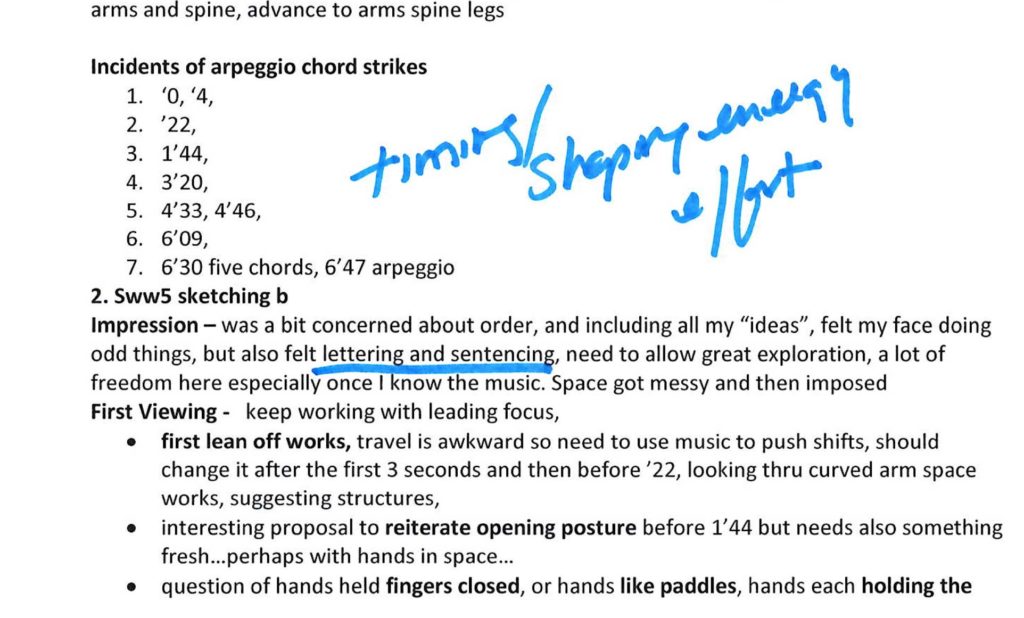
May 12 – with Helen
Showing development of the backing up phrase suggested in Studio Trial 2
2. Run SWW 5 Enso – Great Run!!!!
– questioned the use of the paddle hands – swipe
– questioned the timing of the releve sink and finish
– value of punch downs with little feet – complexity and simplicity is working well
– little elbows and the feet working well (try writing an O with the toe)
with costume almost complete…need neck adjustment and buttons to hold up pants
May 12 – with Helen
Showing development of the backing up phrase suggested in Studio Trial 2
2. Run SWW 5 Enso – Great Run!!!!
– questioned the use of the paddle hands – swipe
– questioned the timing of the releve sink and finish
– value of punch downs with little feet – complexity and simplicity is working well
– little elbows and the feet working well (try writing an O with the toe)
with costume almost complete…need neck adjustment and buttons to hold up pants
Musically I began with Achrimage Form II, a short piano piece by Howard Bashaw. Here I made several discoveries about what the solo needed to fully make its statement, both dramatically and durationally. I eventually chose a much longer piece, Allan Gordon Bell’s Nebulae, 2. Veil. The dance aspired to explore abstract form, akin to asemic writing. The music needed to be open to the rhythms, phrasing and tensions in the body’s negotiation of these many shifting forms. And it needed restraint, a cool emotional tone that allowed the abstract forms of the movement full resonance. That Bell’s piece expressed a quality of suspension throughout, a light prolonged very slow sifting down, supported the measured contemplative unfolding of the choreography.
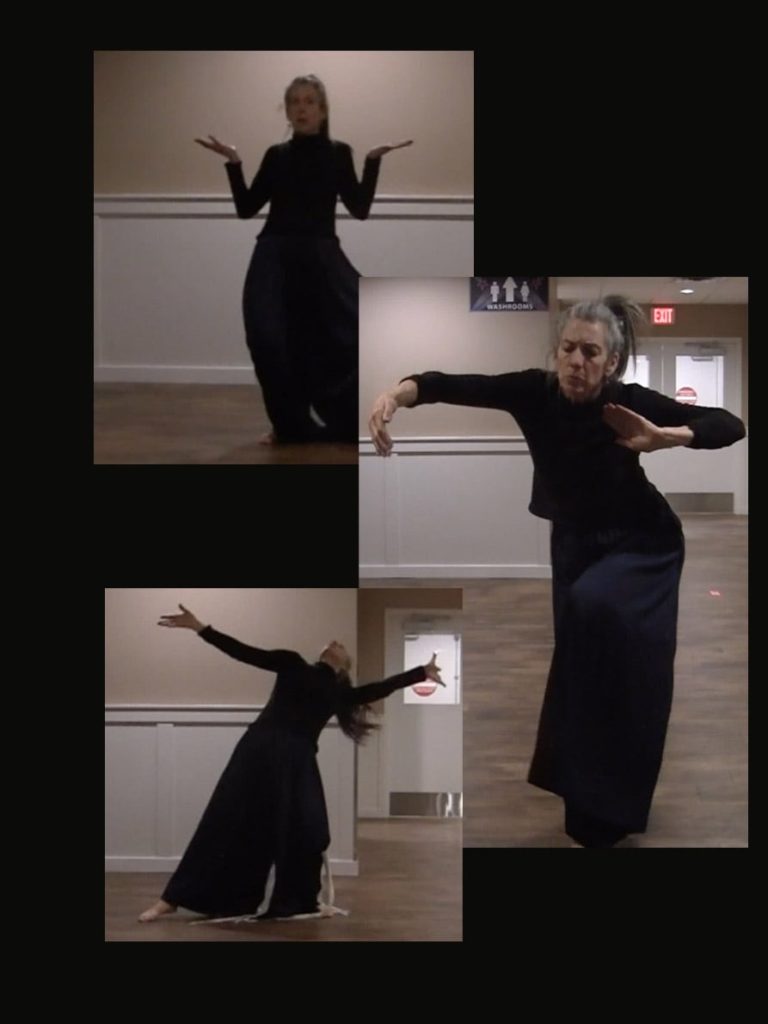
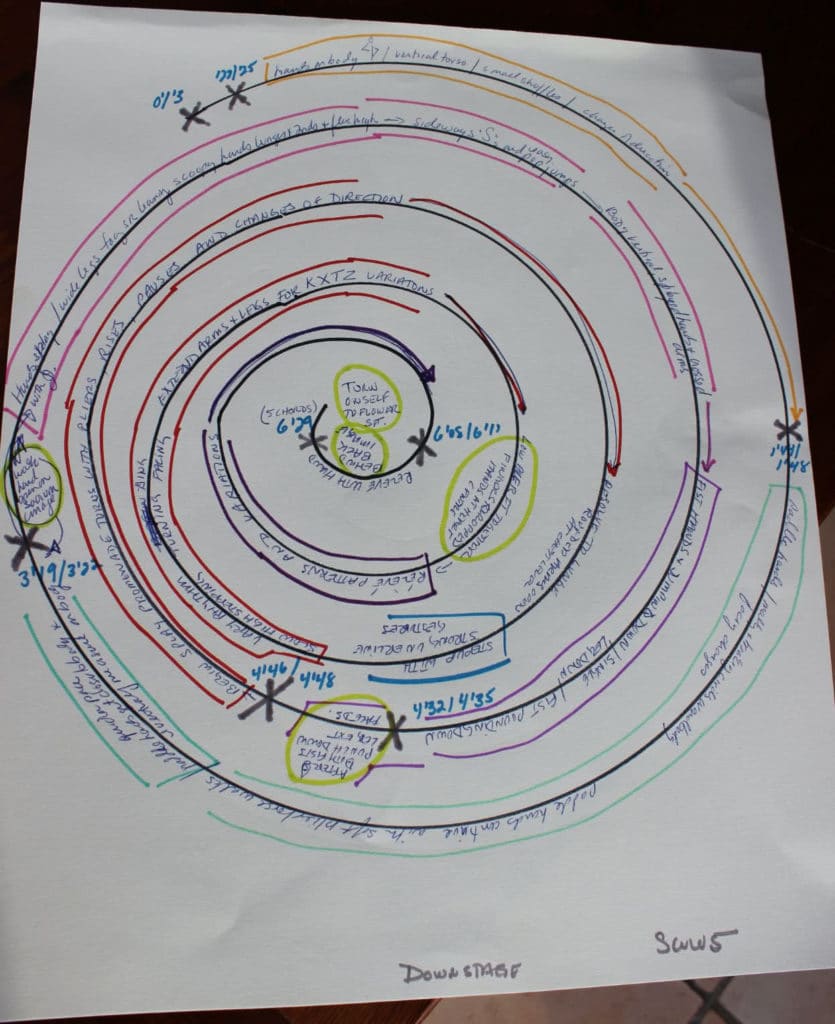
Asemic writing, gesturing, sentencing. Markings. A long sequence of shapings restrained.
In my first viewing of SWW5, I was struck with the elegance of the performer and the simplicity in both the abstract movement, and circular structure of the dance. I sensed the necessity of restraint in the performer; of being present without anticipation of what is to come next. Every movement expression- a foot shimmy, an arm stroke, or a sequence of asymmetrical shapes in the body -asked for clear articulation without any pretence. A natural unfolding was taking place through time and space and; within the presence of the performer. This was the main distinction from all the other dances. I understood that my focus as rehearsal director would be to assist the performer in honing the performance quality already emerging, which was both understated yet energized with calm presence. The research/ seeds of the work allowed us to refer to the performer’s approach as ZEN quality; having restraint from “pushing” or “performing” the movement, and keeping both the attitude and physicality in the body relaxed, clear and grounded. A subtle, yet profound strength emerged from the performer with this approach, which made it even more important to stay with simplicity. Any movement or movement sequences that seemed extraneous or repetitive was investigated and either made more concise or eliminated; lending again to the rule of less is more. As a viewer, what I love most about this piece, is the invitation through the slow unfolding, to enter into a state where time and space become fluid and expansive.
Helen Husak
In Zen philosophy ensō is a circle that is hand-drawn in one or two uninhibited brushstrokes to express a moment when the mind is free to let the body create.
In this piece Davida shared a picture of a spiral from artist Louise Bourgeois and explained that this would be the path of the dance. The dancer is the brush creating the stroke. Black is the color of the ink.
After watching initial rehearsal videos I sketched out some ideas and suggested that Davida work with some costume pieces in rehearsal and see how things developed. I created some very long fringe strips that went from the waist to the floor and beyond to trail behind as well as some very full pants in a lightweight satin. These worked out well to give us a sense of movement possibilities and allowed me to get a good feel for actual dimensions in the real costume fabrics.
Initially I had thought of using black and cream but we decided to go with all black and have a stretch velvet for the top so very deep black under lights. I also incorporated fringe coming off the top in varying lengths for movement emphasis and open shoulders and separate fitted sleeves to break up the black on top. The very full pants were made from a black silk charmeuse so a bit of sheen under lights and great for movement during the dance.
This costume came about through a process of trial and error. Without having pieces to play with in rehearsal we never would have come up with the final design.
Angela Dale
Website: www.fabricadabra.ca
Email: angela@fabricadabra.ca
Instagram: @fabricadabracreations
Hashtag: #fabricadabracreations
We decided to film everything against black and within a static frame without camera panning, so as to keep the focus entirely on Davida’s movement and to show how the piece travels through air. SWW5 has been the exception in that the Gobo pattern provides Davida with a pathway to show the journey of the creation. We had a discussion about what that visual could be and various ways to create it. This visual version is not necessarily what the next version will be. Working with what we have done this time has opened some thoughts of what it could be next time, and once the final works are publicly performed.
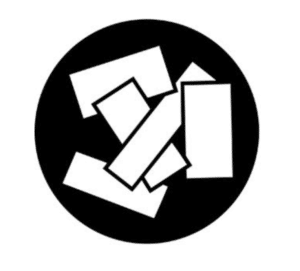
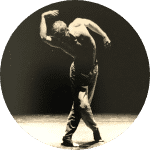
February 10, 2021
Video February 9/4 was a quick and dirty trial of enso, sww5 on Allan’s piece Veil. The spatial idea was the Fibonacci spiral, the vocabulary idea comes from asemic writing, the spirit of the piece is the enso
Will start today with a review of the video Feb 9/4, a closer listen to the structure of Veil, ie when do the chords come, and a study of asemic writing to give some direction to content.
From Feb 9/4 video- Small shifts in feet, continuous turning, wrapping pants, rhythms in feet, releves, one foot promenades, hips sways big body leans, narrow crossed leg sitting with arm articulations
Also try involving the legs more, so begin in chest and shoulders, advance to arms, advance to arms and spine, advance to arms spine legs
Incidents of arpeggio chord strikes
2. Sww5 sketching b
Impression – was a bit concerned about order, and including all my “ideas”, felt my face doing odd things, but also felt lettering and sentencing, need to allow great exploration, a lot of freedom here especially once I know the music. Space got messy and then imposed
First Viewing – keep working with leading focus,
Arpeggio pairs, separated by single or double note suspended even pulse long phrases, occasionally slowing of tempo, breath
Arpeggio Pairs
1. 0 / ‘3
22 Single notes
2. ’22 / ’25
66 Single notes
Noticeable pause
33 single notes – 1’22
3. 1’44 / 1’48
1’49 – 2’08 double notes – 3’38
2’09 – single notes
2’28 – 2’32 – slowing tempo
3’12 – noticeable reverb pedal
3’16 – slowing tempo, breath
4. 3’19 / 3’22
3’26 – 3’51 – double notes
3’52 – 4’05 – single notes – 1’10
4’06 – 4’21 – double notes
4’22 – single notes
5. 4’32 / 4’35
Mildly rushed arpeggio
6. 4’46 / 4’48
Single notes – 1’20
7. 6’08 / 6’11
13 Single notes falling and slowing down
6’29 – single low note followed by 5 chords
6’42 – single low note followed by an arpeggio/* sink to final level – single note, and an arpeggio/ high note x 2
6’57 – single low note